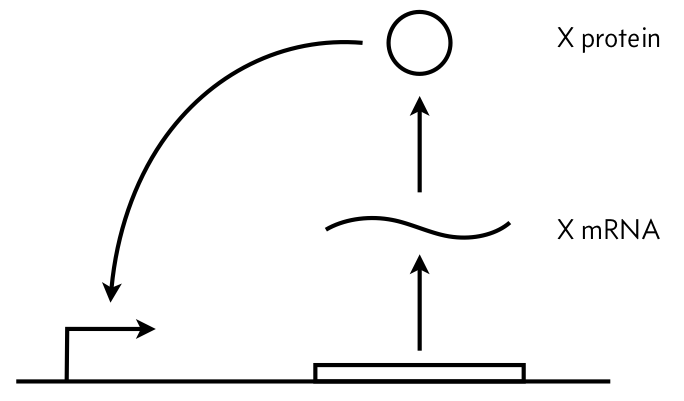Problem 3.3: Autoactivation, bistability, and the importance of leakage
In this problem, we will explore a very simple circuit: autoactivation of a single gene, shown in the figure below. We will assume a separation of time scales in mRNA and protein degradation/dilution such that we only need to consider the dynamics of the protein, and we will call its concentration \(x\). We will further assume that the autoactivation effect can be modeled as a Hill function with Hill coefficient \(n\).

a) Write down an ODE describing the dynamics of \(x\). Include leakage parametrized by \(\alpha\). (This is the same model for an autoactivating circuit we used in the chapter, but now including leakage.)
b) Show that in the absence of ultrasensitivity (\(0 < n \le 1\)), only one steady state exists for \(\alpha > 0\). Show further that when \(\alpha = 0\), two steady states may exist, and when they do exists, only one is stable and the stable one has \(x > 0\).
c) In part (b), we considered the case where activation is not ultrasensitive. We now consider the other extreme, where activation is infinitely ultrasensitive. Derive the condition for bistability when \(n\to\infty\). In other words, for what parameter values does the circuit exhibit two stable steady states? Discuss this condition as it relates to design principles for bistability.